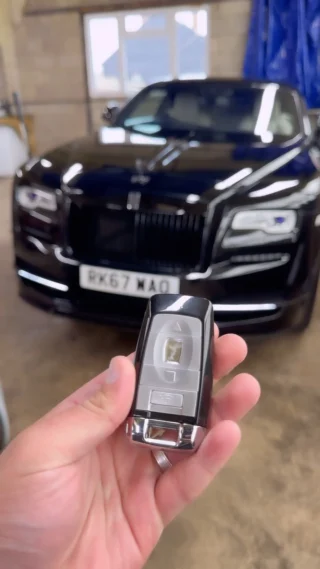20 Things You Should Know About Broken Key Repair
페이지 정보
작성자 Alda 작성일 25-07-25 07:40 조회 3 댓글 0본문
Broken Key Repair: Solutions for Common Lock Issues
Intro
Keys are necessary tools in our daily lives, permitting us to protect our homes, cars, and personal belongings. Nevertheless, they can also break, causing disappointments and troubles. Understanding how to deal with broken key concerns is crucial for anybody wanting to keep their locks and make sure access to their home. This article covers different elements of broken key repair, consisting of common causes, repair methods, and preventive procedures to prevent future instances.
Common Causes of Broken Keys
Keys can break for several reasons. Understanding these causes can assist in preventing future events:
- Wear and Tear: Over time, keys can use down due to frequent use, leading to weakened shafts that are more most likely to break.
- Poor Key Design: Keys that are improperly developed might lack structural integrity, making them more prone to breaking under tension.
- Inaccurate Key Usage: Using excessive force to turn a key, particularly in a jammed lock, can quickly result in a breakage.
- Environmental Factors: Extreme temperatures or direct exposure to moisture can weaken metal keys, leading to brittleness.
- Lock Malfunctions: A malfunctioning lock can position excessive tension on a key, causing it to snap throughout operation.
Signs of a Broken Key
Identifying a broken key often features obvious signs. Here are some signs:

- Partial insertion into the lock: If the key can not be totally placed or gotten rid of.
- Unexpected resistance: If the key feels stuck when being turned.
- Visible divides or fractures: Inspecting the key can reveal cracks or breaks in the metal.
- Incomplete engagement: The key may turn less than needed to actuate the lock.
Approaches for Broken Key Repair
When faced with a broken key, there are a number of approaches to think about for repair. It is necessary to select the right one based on your specific situation.
1. Get Rid Of the Broken Key
If a key breaks within a lock, the very first action is to eliminate the broken part:
- Use tweezers or needle-nose pliers: If a piece is sticking out of the lock, carefully pull it out.
- Insert a key extractor tool: This specific tool can assist extract lodged parts better.
| Tool | Finest Used For |
|---|---|
| Tweezers | Shallow extraction |
| Key extractor tool | Deeply trapped key pieces |
| Lubricant spray | Easing extraction of stuck parts |
2. Superglue Method
For situations where a key has partly broken but is intact enough to remain grasped, the superglue method may offer a short-term fix.
- Clean the broken surface areas thoroughly.
- Apply a thin layer of superglue.
- Hold the pieces together for a few minutes up until the glue sets.
Note: This approach is not a long-term service and must be used with caution as the repair can easily stop working under operational stress.
3. Metal Epoxy
For a more robust repair, metal epoxy provides a stronger bond than superglue.
- Follow the directions on the epoxy product packaging for preparing the adhesive.
- Apply to the broken area and hold till set (generally a couple of hours).
4. Duplicate the Key
In instances where lock functionality is necessary, developing a duplicate key is typically the finest path:
- Visit a locksmith: Many locksmiths can duplicate keys rapidly and efficiently.
- Utilize a key-tracing service: Some locksmiths utilize tracing approaches to cut a similar key based on the residues.
5. Lock Replacement
When keys repeatedly break, it may be due to lock problems rather than key stability. In such cases:
- Consult a locksmith to evaluate the lock's condition.
- Consider changing the lock entirely if significant damage or wear is evident.
Preventing Key Breakage
Avoiding car Key stuck in ignition breakage is typically better than repair. Here are some practical tips:
- Limit force on keys: Always turn keys carefully to prevent unneeded stress.
- Routine key inspection: Check for wear and replace keys showing signs of damage.
- Use a keychain: Prevent extreme bending by using a strong keychain.
- Lubricate locks: Ensure locks run efficiently to decrease pressure on keys.
- Store keys appropriately: Avoid positioning keys in environments that can trigger rust or rust.
Frequently Asked Questions About Broken Key Repair
1. Can I repair a broken key myself?
Yes, you can attempt to repair a broken key yourself using techniques like the superglue or metal epoxy strategies. However, these are temporary fixes, and it is recommended to consult an expert locksmith for a more long lasting service.
2. Is it worth fixing a broken key?
In some cases, particularly with nostalgic or unique keys, a repair may be worth it. For basic keys, duplication or replacement is generally more efficient and reputable.
3. How can I avoid my keys from breaking?
To prevent damage, ensure that keys are not subjected to excessive force, frequently examine them for wear, and keep locks well-kept.
4. When should I look for a locksmith's help?
If you are unable to get rid of a broken key from a lock or if the lock breakdowns often, it's best to look for a locksmith's expertise.
Broken keys can provide a significant trouble, but they are workable with the ideal method. By comprehending the common causes and readily available repair techniques, individuals can respond efficiently to key breakage. Drawing from preventive measures will likewise help keep key integrity and performance. Eventually, a proactive technique to key and lock maintenance can considerably minimize the frequency of these irritating concerns.

- 이전글 What Google Can Teach You About Best Online Poker
- 다음글 The Leading Reasons Why People Perform Well On The Treadmills Sale Industry
댓글목록 0
등록된 댓글이 없습니다.
